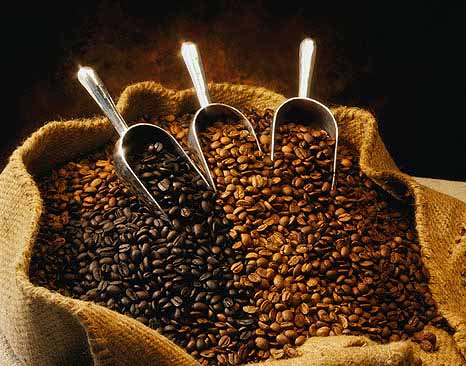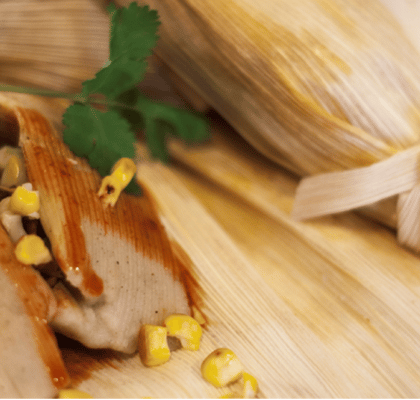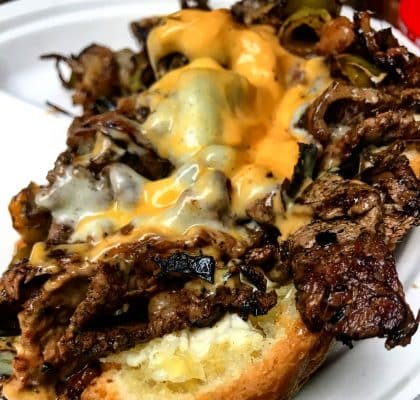We’re expanding our horizons here at the CollabKitchen. Recently we’ve started to roast coffee! We’re very excited about this new adventure.
Here’s my first post I wrote for our new blog, IBoughtARoaster.com! Come and visit us over there sometime! Happy cuppings!
~~~
Last week, Rachel and I went to a Stumptown cupping on 12th Street in Seattle. They offer free public cuppings daily at 3 pm at this location, which is home to their Seattle roasting operations. The idea of a cupping, or coffee tasting, is to experience the multitude of flavors and aromas of various coffee beans from around the world. For Stumptown, it’s an excellent way to reach out to their community with a bit of coffee education and culture. For us, it was an attempt on our long journey to developing our palate and getting to know coffee a little bit better so that perhaps one day we can roast excellent coffee ourselves!
The cupping worked like this:
We went downstairs into their basement which is where their gigantic roaster, their coffee bean sorting and storage room, and their education room are located. We were actually invited to stand around a counter or bar, which is right in the middle of all of these sections of the basement. There were six of us tasting, and one extremely knowledgeable Stumptown ‘tour guide’ (I’ll call him) to help us along with our cupping. First he introduced us to the 6 beans we would be experiencing:
- El Salvador Aida’s Grand Reserve (my favorite of the day)
- Guatemala Finca El Injerto – La Cima (a decent cup)
- Guatemala Finca El Injerto – El Tanque (did not like at all)
- Ethopia Yukro (yummy)
- Kenya Gaturiri (very fruity)
- Kenya Gatomboya (like tomato soup)
We made three “passes” through the coffees, experiencing each three times. [That’s a lot of sniffing and slurping and at times, I felt light-headed!] The first pass was to sniff each whole, unground bean three times in a row, then move on to the next batch of beans. So for example, we would smell (with mouths open to experience the fulness of the aroma) Aida’s Grand Reserve in three separate bowls in a row, then move on to the next, Guatemala Finca, and smell that three times in a row, and so on. So 18 bowls total. Experiencing the coffee three times in a row, we were told, would help us to really “get” the smell and tastes of the coffees. It also really helped noticing the differences, stark or subtle, between the beans. Repetition was key for the cupping.
The second pass was to smell each coffee after it had been ground, three times per bean, like we did in the first pass. This ground coffee phase really introduced us to the opening of the aromas of the beans. Again, we needed to remember to leave our mouths open to gain the full aroma.
The third pass was to smell each of the coffees after the cups had been filled with hot water, and after we had broken the “crust” of the grounds that had risen to the top of the cup. We were only allowed to pick 2 of our favorites for this part as there wasn’t enough cups to do one bean per person. We were taught to use only the back of the spoon to break the coffee grounds floating at the top of the hot water, and then quickly slide the back of the spoon in a circle (being careful not to stir) while smelling the gas that was being emitted by the coffee. We needed to smell immediately after breaking the crust, as the gasses would quickly slip away if we weren’t careful to catch them with our noses! (Nose-catching… Sounds funny, doesn’t it?) This gave us the most intense introduction of the coffee short of tasting them.
The fourth and final pass was the actual tasting of the coffee, or rather the very loud slurping part. After the grounds had sat in the coffee for about 3 – 5 minutes, our Stumptown ‘tour guide’ carefully removed all the grounds and oils that were floating at the top, with a spoon. He then modeled for us how to take a small spoonful of the coffee liquid, then slurp quickly (and loudly!) so that the coffee would slide all the way across the tongue until the coffee hit the back of the throat, then let it slide back across the tongue, then spit out into our own personal (and portable!) spitting cups. All of that slurping is done very quickly and loudly. The reason for this intense slurping is so that our tongue can experience a full “10 points” of flavor rather than just “2 points” if we only just let it hit the front of the tongue. And he’s right! Letting the coffee travel all the way back and fourth really does give you a chance to experience the complexities of flavors in one single slurp of coffee.
A few other things we learned at our cupping
- It’s Stumptown’s philosophy to roast lighter, avoiding darker roasts, in order to maintain the “integrity of the coffee bean.” Since coffee is a fruit, it contains natural sugars (coffee’s best kept secret is that it’s naturally sweet!). The darker the roast, the more these natural sugars begin to burn, leaving a nasty, burnt flavor. (Kinda of like eating burnt toast. You don’t taste the toasted bread at that point, just burn flavor. Ew.)
- There are two types of sweet: savory-sweet, like caramel, cinnamon and molasses, and fruity sweet, like orange, raspberry, pear, etc.
- We taste acidity on the tips of our tongue, and there’s nothing wrong with acidity in coffee. A coffee that’s not so acidic is considered “flatter.”
- I asked how come some coffee has more body than other coffees if they are roasted and brewed the same way. My tour guide was quick to correct me in saying that they use the word “texture” rather than body, and the reason for the differences in texture (or how heavy coffee feels in the mouth – like water vs. cream) is due to solubles. Different coffees have different solubles that get passed through during the brewing process. It’s a measure of viscosity. In everyday terms (and for fluids only), viscosity is “thickness” or “internal friction.” So it can be said (or measured) that water has a lower viscosity than honey.
- Finally, I really did enjoy the El Salvador Aida’s Grand Reserve ($22/12 oz!). I guess Aida sells her beans to Stumptown blended, not single origin, which is rare. Another rarity is that Aida, a third generation farmer, is growing organic Kenyan varietals in her El Salvador farm.
I am looking forward to many more cuppings both at Stumptown and other roasting plants. Stay tuned for more coffee adventures!







